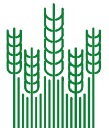Water protection and economic impacts of a restructured agri-environmental subsidy scheme: A model perspective on high productivity farming
Evaluating the potential environmental impacts of new environmental policies is in general interest of society and particularly of policy-makers. The specific policy we focus in this study is the new compensation system for farmers who implement environmental protection measures in Finland. This scheme started in 2015 and brought several changes to the previous subsidy scheme. The scheme contains still maximum allowed limits for fertilizer use, which have been criticized in the past as harming the farms that would without the limits achieve higher yields and profits.
In this study we create a model describing a high productivity farm, which is able to achieve double the average yields in rye cultivation by using hybrid seeds, and examine how the new subsidy scheme is affecting the profit-maximizing solution.
We find that the overall change in the Finnish CAP implementation is reducing the farm profits by 2.5%. Total subsidies decrease 5.5 %. Environmental subsidies obtained decrease 40.8% from the previous scheme. The new scheme leads to decreasing fallow area, increasing oil seed cultivation, total fertilization and fertilization intensity of rye. Farm phosphorus load increases by 2.3% and nitrogen load by 32%. Uncertainties in estimating nitrogen loads increase due to changes in the fertilization limit classification and the additional categories of limits that depend on past yield levels.
A cost-efficient solution to achieving the nutrient load levels of the new scheme indicates that theoretically the level of nutrient reduction set in the new scheme could be achieved with less costs to the society. The cost for the society for not implementing a first-best agri-environmental policy is 147 €/ha. As we are not covering transaction costs or other public benefits from the measures besides water protection, such as biodiversity, the estimate can be regarded as a reference level that the other benefits of the new scheme should exceed (or for the maximum level of transaction costs for the cost-efficient solution, that would still provide overall welfare gain over the new system). The most pronounced difference in the land allocation between the cost-efficient solution and the new scheme is resulting from “greening” of CAP, which diversifies the crop choice compared to the cost-efficient solution in which the reductions are obtained by decreased fertilizer intensity and larger share of direct tillage. These results depend on the estimated impacts of direct tillage on especially hybrid rye yields, for which our model is not containing first-hand data.
Our results demonstrate the importance of understanding crop cultivation development in agri-environmental policy analysis and the changes to the subsidy system as a whole. The overall impact of new rye hybrids and the subsidy targeted towards rye, as well as the exceptions given for the higher yields in the limits of the scheme, can lead to increases in nitrogen loads more generally in Finland.
- Log in to post comments


